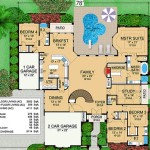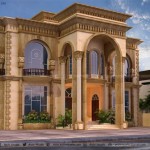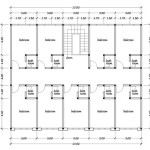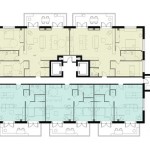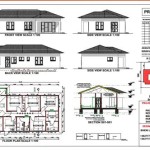Postmodern Architecture House Plans
Postmodern architecture represents a departure from the strictures of modernism, embracing ornamentation, historical references, and a playful approach to design. This philosophy extends to residential architecture, resulting in house plans that are diverse, expressive, and often defy easy categorization. Understanding the key characteristics of postmodern house plans can help prospective homeowners navigate this eclectic architectural style.
One of the defining features of postmodern house plans is the incorporation of historical references. Architects frequently draw inspiration from classical, baroque, or even vernacular building traditions. These references might manifest in the use of columns, pediments, arches, or other decorative elements. However, these historical motifs are rarely used in a strictly traditional manner. Instead, they are often reinterpreted, fragmented, or juxtaposed in unexpected ways, creating a sense of irony or playful allusion.
Another key element of postmodern design is the emphasis on ornamentation. Unlike the minimalist aesthetic of modernism, which eschews superfluous decoration, postmodern house plans often feature intricate details, vibrant colors, and a variety of textures. This ornamentation can take many forms, from decorative moldings and patterned brickwork to elaborate facades and complex rooflines. The goal is to create a visually rich and stimulating environment.
Complexity and contradiction are central to the postmodern ethos. House plans in this style often feature asymmetrical layouts, fragmented forms, and unexpected juxtapositions of materials and styles. This rejection of strict symmetry and uniformity creates a sense of dynamism and visual interest. The use of contrasting colors, textures, and architectural elements further enhances this sense of complexity.
Postmodern architecture also frequently incorporates elements of popular culture and vernacular design. This can include references to commercial architecture, roadside signage, or everyday objects. The incorporation of these elements reflects a broader cultural shift towards embracing popular culture and challenging traditional notions of high art.
While postmodern architecture celebrates ornamentation and complexity, functionality remains an important consideration. Postmodern house plans are designed to be livable and practical, accommodating the needs of modern families. Open floor plans, ample natural light, and well-defined private spaces are common features. The challenge for architects working in this style is to balance the desire for expressive design with the practical requirements of residential living.
The use of diverse materials is another hallmark of postmodern architecture. House plans might incorporate a combination of traditional materials like brick and stone with more modern materials like steel and glass. This eclectic mix of materials contributes to the overall sense of complexity and visual interest. It also reflects a broader postmodern sensibility that embraces diversity and rejects the notion of a single, dominant aesthetic.
Postmodern house plans often play with scale and proportion. Elements might be exaggerated or diminished in size, creating a sense of surprise or disorientation. This manipulation of scale can also be used to highlight certain features or create a sense of hierarchy within the design. For example, an oversized entryway might be used to emphasize the importance of the threshold between the public and private spheres.
Color plays a significant role in postmodern architecture. Bright, bold colors are often used in unexpected ways, creating a sense of playfulness and energy. Color can also be used to define different zones within the house or to create visual connections between interior and exterior spaces. The use of color in postmodern architecture reflects a broader cultural trend toward embracing vibrancy and individuality.
When considering postmodern house plans, it's important to recognize that this is not a monolithic style. There is a wide range of interpretations and variations within postmodern architecture. Some house plans might emphasize historical references, while others might focus on playful ornamentation or the use of unconventional materials. The key is to find a design that reflects individual tastes and preferences.
Finding the right postmodern house plan requires careful consideration of various factors. Prospective homeowners should research different architects and styles within the postmodern movement. Consulting with an architect specializing in postmodern design can be invaluable in navigating the complexities of this unique architectural style. Ultimately, the goal is to select a house plan that balances aesthetic appeal with functionality and personal expression.
Examining existing examples of postmodern houses can provide valuable insights. Architectural publications, online resources, and even visits to local examples can offer inspiration and help clarify design preferences. Paying attention to the details of these examples, such as the use of materials, color palettes, and the interplay of form and function, can help homeowners articulate their vision for their own postmodern home.
Adapting postmodern house plans to specific site conditions is an important consideration. Factors such as the topography, climate, and surrounding environment should influence the design and orientation of the house. A skilled architect can help integrate the house seamlessly into its surroundings while maintaining the integrity of the postmodern aesthetic.

A Postmodern Take On Shingle Style Home Monta Ny Aspire Design And

Sas Box1 Post Modern

Modern Contemporary Luxury Home Plans Post Custom House Architect Green Design Energy Efficient Blueprints

Pascaltanyeji I Will Design Your Architectural And Structural Project Drawing With Revit Autocad For 5 On Fiverr Com Duplex House 2 Y Bungalow
The Flaws Of Post Modern Architecture Rtf Rethinking Future

Postmodernism In Architecture Michael Graves Portland Building

Home Styles Why Postmodernism Still Matters

Digitaly Rendered Postmodern House Post Modern Architecture

On The Market 5 Bold Postmodern Homes
A Gem Of Postmodernism Iconic Houses


